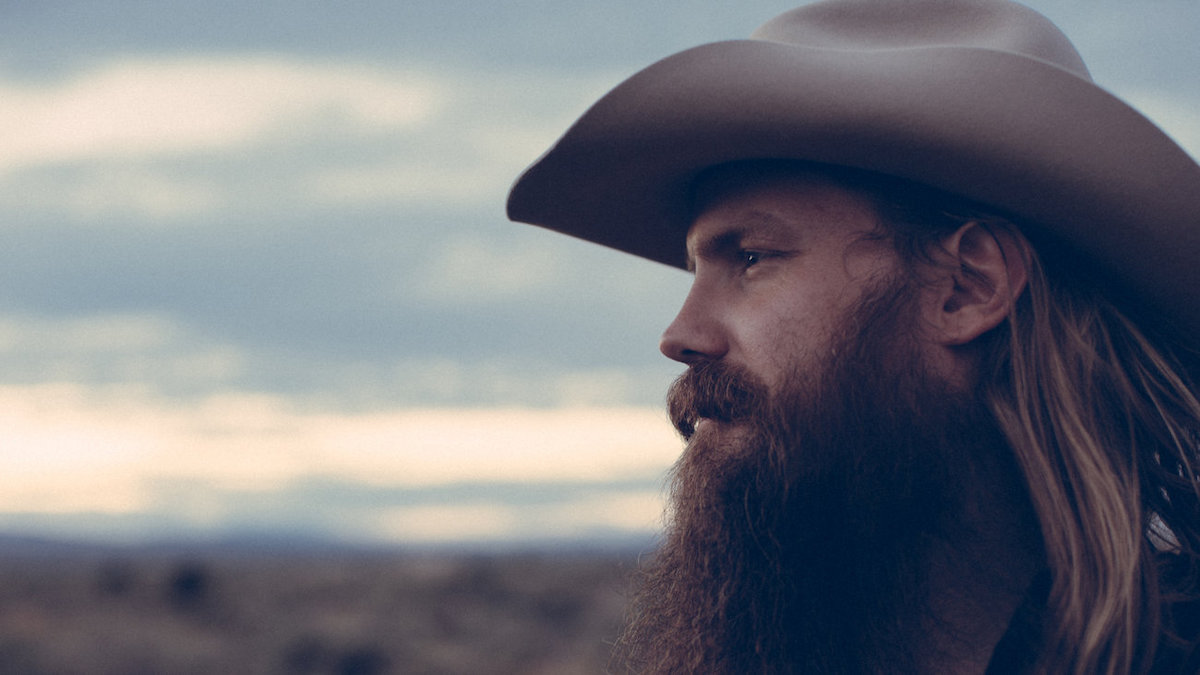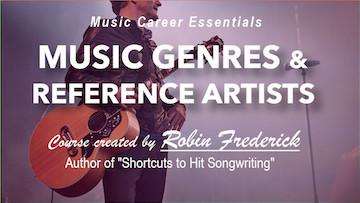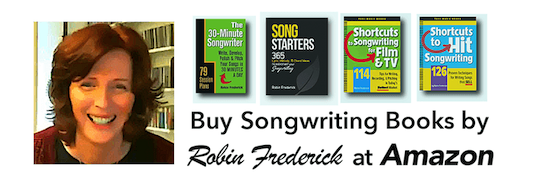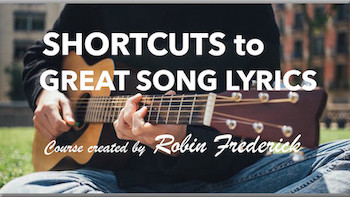Why this song?
“Cold” is a powerhouse Alt Country song that adds to Chris Stapleton’s solid reputation as one of Country’s great songwriters.
Although Chris Stapleton has had Mainstream Country hits, his songs don’t fit easily into the Contemporary Country style. The big hits he’s written or co-written for other artists—including “Drink a Beer” for Luke Bryan and “Never Wanted Nothing More” for Kenny Chesney—tend to fall into a neo-traditional Country style that harks back to the acoustic, folk roots of Country music. When Chris Stapleton finally recorded his own songs as an artist, he scored big with “Broken Halos,” a song with a lot of that folksy, roots appeal.
“Cold,” the song I’m looking at here, is more likely to reach a wide audience through film and TV uses than Contemporary Country radio. Many of Stapleton’s songs have been featured in TV series and I think this one is a natural for that market. Listen and see if you agree.
SONG GUIDE
“Cold” – Chris Stapleton
Songwriters: Chris Stapleton / Dave Cobb / J.T. Cure / Derek Mixon
TECHNIQUES TO HEAR AND TRY:
• Add character to your lyric.
• Use images and physical sensations to engage the listener.
• Interval leaps in your melody get attention.
• Try this melody trick I haven’t heard before.
Listen to the song. Read the lyrics.
Watch the lyric video on YouTube.
Read the lyric here.
GENRE/STYLE: (Southern Soul/Blues Rock)
(What is a genre? Watch this video.)
With its gravelly vocal, bluesy chords, and lush string arrangement, “Cold” takes listeners back in time to some of the great soul hits of the 1960s. The Southern Soul genre has a long and illustrious history that includes artists like Jimmy Hughes, Otis Redding, and Steve Cropper. It’s an evocative blend of R&B, Gospel, and, in this case, a touch of Outlaw Country.
“Cold,” is not on the Country music charts. Instead, it’s showing up on the Nielsen Triple A radio airplay chart where you’ll find an eclectic blend of great music—from Indie Rock to Singer-Songwriter to Americana—that appeals to the college crowd and lovers of non-mainstream music of all kinds.
SONG STRUCTURE
The structure here is a proven, time-tested hit song form.
VERSE/CHORUS
VERSE/CHORUS
BRIDGE
INSTRUMENTAL VERSE/CHORUS
VERSE 1 begins with “Girl, the way you broke my heart…”
VERSE 2 starts with “What am I supposed to say…”
CHORUS opening line “Oh, why you got to be so cold?”
BRIDGE (2:50) starts with “I can only feel my love hangin’ on.”
INSTRUMENTAL BREAK (3:06): Following the bridge, there’s a guitar solo over the verse chords. Although guitar solos are fairly rare these days, for the Gospel Blues style of this song it feels right at home. At 30 seconds, I do think it goes on too long—half the length would have been fine. But hey, it just feels like the 1960s all over again.
– Try It Now –
The Gospel-flavored piano chords of the Intro clearly announce the soulful feel of the song. Keep this in mind when crafting your own song intros. Give listeners a taste of the style and emotional tone they can expect to hear. It’s a great way to welcome them into the song and get them in the mood for what follows.
LYRICS
Chris Stapleton has a big, raw voice and needs songs that convey the character his fans have come to know: tough, hard-living, but emotionally honest, even vulnerable. He and his co-writers must believably capture that character in every line of his songs. Let’s see how they managed it in this lyric.
ADD CHARACTER TO YOUR LYRIC
The opening lines of this song offer a blend of tough skin and emotional vulnerability.
Girl, the way you broke my heart
It shattered like a rock through a window
We’ve all written lines like “you broke my heart,” but this song follows it up with an image that tells you a lot about the singer—his heart didn’t just break, “it shattered like a rock through a window.”

The casual violence of a rock through a window seems like something the singer has probably seen or experienced. Therefore, it sounds believable. It sounds like something he would say.
If he said his heart “shattered like a $300 bottle of Cristal champagne,” listeners would react negatively. The image would sound false, out of character, and not credible. The problem is not with the image—an artist like Bruno Mars could use that image very effectively.
The language and images in your lyric should support and enhance the character of the singer, whether that singer is you or an artist you are going to pitch to. Otherwise, listeners will become suspicious and doubt whether the character can be believed. When that happens, they lose interest.
– Try It Now –
Listen to or read the lyrics to a few songs by your favorite artists. Notice how they choose to portray themselves in these songs. What is their character? How do they want you think of them? How do they express that in their so
USE IMAGES WITH ASSOCIATIONS
The “rock through a window” image does more than express character. It also comes with associations. A rock through a window is a threat, usually anonymous, a lawless attack on the place where you live. All the more frightening because it comes out of the blue.
These associations help listeners understand and empathize with what the singer is feeling. What his lover did was unfair, a betrayal he couldn’t anticipate. And, thanks to the image’s associations, we can feel what he feels and sympathize with him.
No artist wants to appear mean or whiney to his fans. By using an image to portray the situation as a betrayal or attack, the singer gets listeners on his side.
USE PHYSICAL SENSATIONS TO PUMP UP LISTENER ENGAGEMENT
This chorus lyric is filled with powerful visual images and physical sensations that evoke pain, wounding, and betrayal: “cut,” “knife,” “ice,” “hole in the middle of my soul.” And above all, the sensation of being “cold.”
Even though the singer refers to the other person as acting in a cold manner, the word “cold” itself makes an impression on the listener, one that comes with a physical response. The physical response (of feeling cold) is below the listener’s awareness, but it is nevertheless there, keeping listeners mentally and physically engaged on a level that goes beyond passively listening.
Find out more about using physical sensations and images to add impact to your lyric.
– Try It Now –
Rewrite a lyric of your own or write a verse and chorus lyric using the physical senses (touch, taste, hearing, smell, sight) to engage the listener.
MELODY
INTERVAL LEAPS GET ATTENTION
The first note of the chorus is a little over an octave above the last note of the verse. That’s a BIG jump! Then the melody drops down a fifth and works its way back up over and over again, creating a sense of struggling to get up after being knocked down.The entire chorus remains in a higher note range than the verse, adding urgency and emotion to the chorus melody.
EMPHASIZE IMPORTANT WORDS WITH YOUR MELODY
The highest notes of a melody will tend to emphasize the words that land on those notes. In the chorus, those words are “cold,” “cut me” “hole,” and again “cold.” It makes listeners notice those words.
Rhyming words at the end of a melody phrase also grab attention: “knife,” “ice,” “hole,” “soul,” and “cold.” When fitting your lyric into your melody, keep that in mind and make sure your melody is adding strength to important words.
– Try it now –
Take a look at some of your favorite successful songs to see how they use the melody to emphasize the important words in their lyric.
TRY THIS PHRASING TRICK

The melody in Verse 1 has some long pauses at the ends of lines. For example, after “rock through a window,” the vocal melody drops out for 8 beats. That’s a loooong time, especially for today’s short-attention-span listeners.
But, take a listen to Verse 2. You won’t hear that long pause. It’s filled with an extra melody and lyric phrase (“I guess I’ll tell ‘em I’m without you.”) The same thing happens after the next pair of lines.
I can’t recall ever hearing this technique before. I’m sure someone must have done it, but I think it’s rare. It’s not a background vocal; it’s a new phrase added to the lead line that fills empty space and builds momentum as the song develops. If you’ve got a song with long pauses, try this trick and see if it picks up the energy.
CHORDS
The song is written with basic songwriter chords. The emphasis is on minor chords with both verse and chorus beginning on A minor. The verse depends heavily on minor chords (3 out of 5) adding to the dark, melancholy vibe of the verse. Only the bridge begins on a major chord.
VERSE: | Am | Em | Dm | F E |
CHO: | Am | G | Dm | F E |
BRIDGE: | G | Em | G | F | E7 |
-Try It Now –
Learn to play and sing a verse and chorus of this song to get the feel of the soulful swing that gives the style so much of its appeal. Try it in a song of your own. To play along with the recording, guitar players use a capo on the fourth fret, keyboard players transpose up 4 steps.
See the chords with lyrics here.



